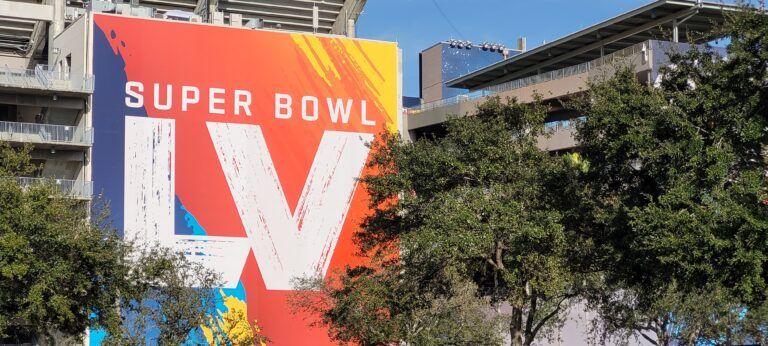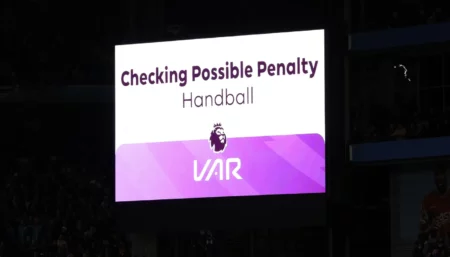Each year, the Super Bowl pushes cellular capabilities to new levels as more fans use mobile devices to share the action and interact with the stadium. At the recent Super Bowl 55 at Raymond James Stadium, it was discovered that 5G performance across all major networks has rocketed since last year’s Big Game.
Global Wireless Solutions (GWS) released the results of its network performance testing from Super Bowl LV in Tampa and found that 5G performance has dramatically improved in the year since Super Bowl LIV. AT&T, Verizon and T-Mobile’s 5G networks all achieved faster average throughputs, maximum 5G throughputs and overall “blended” 4G/5G throughputs when compared to last year’s testing.
GWS conducted competitive benchmark testing across the major operators (AT&T, T-Mobile, and Verizon) throughout Super Bowl LV on Sunday, February 7 at Raymond James Stadium in Tampa, Florida. Collection was conducted utilizing SwissQual QualiPoc on Samsung Note 20 5G devices.
GWS testing specialists conducted collection at the Gameday Fan Plaza outside the stadium as well as throughout the concourse areas and seating inside the stadium.
While thousands of fans were in and around Raymond James Stadium attending events and cheering for their favorite team, GWS’ network testing specialists were also on site measuring 5G performance. GWS network tests were conducted using the Samsung Note 20 5G devices for AT&T, T-Mobile and Verizon. In addition, the free in-stadium WiFi service was also tested.
In order to assess the fans’ mobile experience, performance data was collected throughout the entire day of festivities. More specifically, testing was conducted at the Gameday Fan Plaza before the game while fans were enjoying pre-game festivities. Later, inside the stadium, network testing specialists collected test samples at multiple locations throughout the stadium concourses and seating areas. 5G network performance inside the stadium was measured prior to the start of the game, during, and after (including post-game activities).
GWS test results show that the operators were ready for the big game. They invested in coverage and technology in and around the stadium and, as a result, 5G throughputs were fast, reliable, and available to fans. Each operator was ready for the rush of videos, pictures, and social media posts attendees wanted to share about their game day experience.
Key Findings:
Average 5G Throughputs: During game day, AT&T had the highest average 5G download throughput at 1,261 Mbps, with Verizon at 432 Mbps and T-Mobile at 388 Mbps. These lightning-fast speeds for all operators were dramatically improved compared to last year’s 5G performance at Super Bowl LIV (AT&T averaged 337 Mbps, Verizon 200 Mbps and T-Mobile 31 Mbps).
Maximum 5G Throughputs Achieved: History wasn’t only made on the field yesterday, as 5G throughputs of all three nationwide network operators exceeded 1Gbps, perhaps a first at any major sporting event; AT&T was able to achieve 1.71 Gbps, Verizon 1.51 Gbps and T-Mobile 1.09 Gbps. Again, 2021’s maximum throughputs were greatly improved when compared to 2020’s which were 878 Mbps for AT&T, 924 Mbps for Verizon and 175 Mbps for T-Mobile.
Overall “Blended” 4G/5G Throughputs: When looking at 4G/5G blended network speeds (i.e., factoring in the instances when 5G resources are not available and the networks revert to 4G), operators had the following throughputs: AT&T 975 Mbps, Verizon 425 Mbps, and T-Mobile 385 Mbps, versus 76 Mbps for the stadium’s WiFi network (in 2020, AT&T and Verizon averaged 150 Mbps while T-Mobile averaged 56 Mbps).
Cell Coverage: While taking measurements, GWS’ network testing specialists found 67 distinct AT&T cells of which they were able to find 5G on 66; for Verizon there were 81 cells found with 63 showing 5G; and for T-Mobile there were 41 cells found with 40 showing 5G.
Technology Impact: In addition to deploying numerous cell sites, operators utilized high levels of carrier aggregation (CA) enabling them to create sizeable amounts of bandwidth (available capacity that helps sustain high throughputs). In particular for 5G, GWS saw a maximum of 8 channel CA (or 800 MHz of 5G spectrum in the 39GHz band) on AT&T’s network 74% of the time while testing; on Verizon’s network a maximum of 6 channel CA (or 600 MHz of 5G spectrum in the 28 GHz band) was seen 77% of the time; and on T-Mobile a maximum of 4 channel CA (or 400 MHz of 5G spectrum in the 39 GHz band) was seen 73% of the time (T-Mobile was also seeing 5G a further 20% of the time using 80 MHz at 2.5GHz).
“Our network performance testing clearly showed that 5G’s capabilities have dramatically improved since last year’s Super Bowl,” said Dr. Paul Carter, CEO of Global Wireless Solutions. “This improved 5G service is a testament to the continued investments made by each operator. As they harden and upgrade the network infrastructure, 5G will offer more tangible benefits to consumers across the country.”





